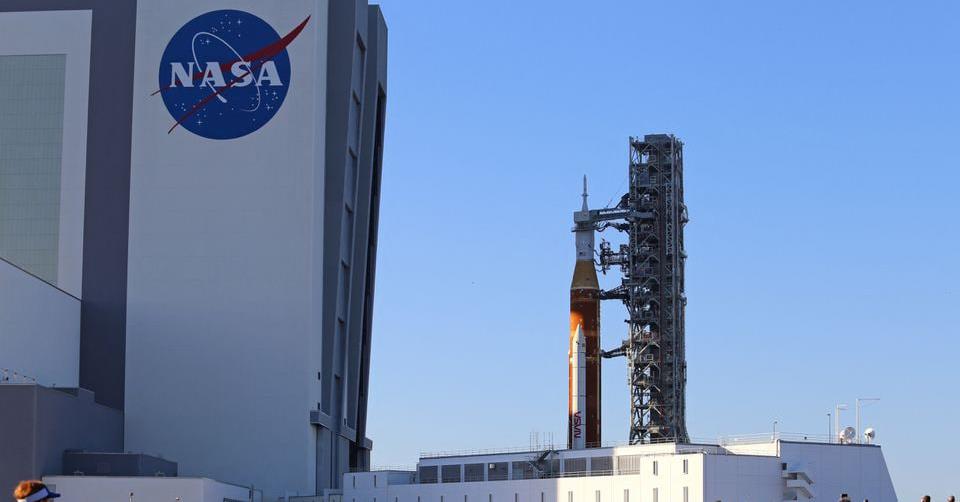CAPE CANAVERAL, March 17 (Reuters) - NASA's next-generation moon rocket began a highly anticipated, slow-motion journey out of its assembly plant en route to the launch pad in Florida on Thursday for a final round of tests in the coming weeks that will determine how soon the spacecraft can fly.
Rollout of the 32-story-tall Space Launch System (SLS) rocket and its Orion crew capsule marks a key milestone in U.S. plans for renewed lunar exploration after years of setbacks, and the public's first glimpse of a space vehicle more than a decade in development.
The process of moving the 5.75-million-pound SLS-Orion spacecraft out of its Kennedy Space Center Vehicle Assembly Building began shortly after 5:30 p.m. EDT (2130 GMT) under clear skies at Cape Canaveral. A nearly full moon rose about 90 minutes later.
The SLS-Orion, which cost some $37 billion to develop including ground systems, constitutes the backbone of the NASA's Artemis program, aimed at returning astronauts to the moon and establishing a long-term lunar colony as a precursor to eventual human exploration of Mars.
The megarocket - standing taller than the Statue of Liberty - was being slowly trundled to Launch Pad 39B atop an enormous tractor-crawler roughly the size of a baseball diamond, creeping at less than a mile per hour on a 4-mile (6.5-km) journey expected to take about 11 hours. The crawler is operated by a 25-person crew.
The spectacle was carried live on NASA Television and the space agency's website. A band from the University of Central Florida played the National Anthem as the rollout began in front of throngs of employees and other onlookers gathered outside to watch the event.
"Ladies and gentlemen, the world's most powerful rocket, right here," NASA chief Bill Nelson told the crowd, gesturing toward the spacecraft minutes after the rollout started. "Humanity will soon embark on a new era of exploration."
Among those in the crowd was former astronaut Tom Stafford, who orbited the moon as commander of Apollo 10 in 1969, NASA said in its webcast.
The rollout, paving the way for NASA's uncrewed Artemis I mission around the moon and back, was delayed last month by a series of technical hurdles the space agency said it has since resolved as teams readied the rocket for the launch pad.





